7 tips for choosing a facing stone for the facade and basement
In terms of popularity among facade materials stone is second only to plaster. A huge variety of facing stone allows you to implement any ideas with it and fit into any budget. Stone can to finish the whole house, its basement, to decorate window and doorways - More than enough options. When it has already been decided how the facade will be arranged and the time comes to buy the right material, the most crucial moment awaits us - to sort through the entire assortment and find the most suitable solution. What kind of facing stone for the facade and basement exists, what is the difference between its different types, and which masonry is better?
No. 1. Types of stone for the facade of the house
The whole stone that the market offers us today can be divided into two large groups:
- a natural stone;
- fake diamond.
Natural stone is divided by breed, artificial - according to the manufacturing technology and the materials used for this.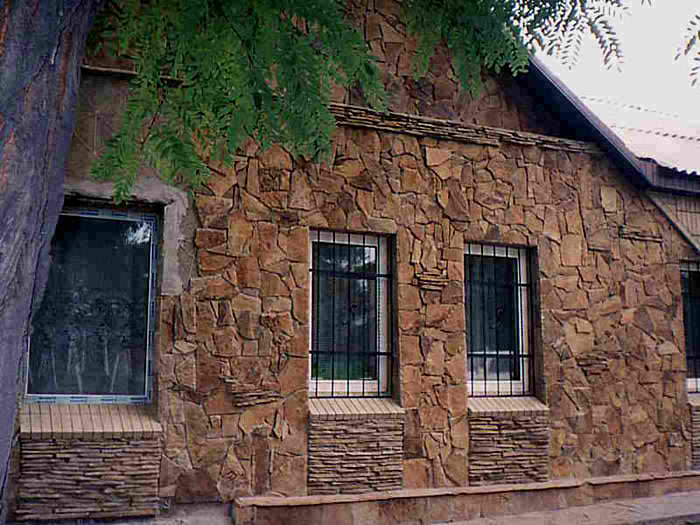
No. 2. Natural stone: pros, cons, format
When the budget allows, natural stone is probably the best way to finish the facade of a private house. To his main benefits relate:
- stunning appearance with an original and unique texture, a beautiful shade and relief;
- environmental friendliness, because it is a material of natural origin, and if it can be processed, it is only mechanical;
- resistance to negative environmental factors (sunlight, precipitation, temperature extremes, as well as mold and insects), therefore, natural stone is a reliable protection of the external walls of the house;
- high durability.

Among disadvantages, of course, high price, therefore, natural stone can be considered a kind of indicator of the status of the owner of the house. On the other hand, expensive material can be used to decorate some elements of the facade: the stone goes well with stucco, and as a result, facade work will be much cheaper, and the house will look great. In addition, in this way, the load on foundation. If the full facade cladding will be carried out with natural stone, then this must be taken into account at the design stage of the house in order to make a more powerful foundation, because the weight of the stone is large enough.
Natural stone is usually exposed before sale machined more-less. It can be cut, sawed, sanded, polished or milled. Depending on the processing option, natural stone is:
- “Rock” - a stone that fully preserves its natural structure;
- buchardovanny - a stone whose surface is made with imitation of point strong blows;
- polished - stone with a more or less even texture and obvious traces of machining;
- sawn stone retains its natural roughness and may be exposed to flame during processing;
- polished stone has a matte and almost smooth surface;
- polished stone is processed to a mirror shine.

As for the dimensions, natural stone is usually supplied with a thickness of 1.5-2.5 cm, and according to the format, these types of stone are distinguished:
- wild stone - elements of irregular shape, but with neatly crafted edges, it is more difficult to make a facing from such a stone, but it looks gorgeous;
- stone slabs (sometimes called slabs) also have an irregular shape, but differ in large size. In fact, it is a large one-piece stone block;
- Euro-2 tiles have dimensions 60 * 30 cm and a thickness of 2 cm, it is easiest to work with; therefore, such a stone is in greatest demand;
- die - a stone with dimensions of 30 * 30 cm and a thickness of about 2 cm, is created from scraps of material.

No. 3. Natural stone: types
For the decoration of the facade, these types of natural stone are usually used:
- granite - one of the most durable stones, has a decent hardness, frost resistance, minimal moisture absorption. It looks massive and strict, it can have a polished or chipped surface, the color depends on impurities: it can be from light gray to pink and almost red. The minus of the material is an increased natural radiation background, therefore it is better to purchase it in proven places so that all the stone indicators comply with safety standards;

- marble easy to process, it can be polished to a mirror surface, which is used for the production of facade tiles. The color, like granite, depends on impurities, and in light the stone looks especially beautiful. Marble of medium hardness is used for cladding, it is strong enough and dense, but can darken over time;

- labradorite - durable and beautiful stone, ideal for decorating the facade, but very expensive, since its deposits are few. They can be lined only with individual parts of the facade;
- limestone - relatively inexpensive stone, easy to process, has much higher thermal insulation properties than granite and marble. Color - from white to gray and yellow. It is easy to work with the material, it has bactericidal properties, but in terms of hardness it is much inferior to other stones, and high porosity favors increased moisture absorption;

- sandstone can be chipped or polished, it is inferior in strength to granite, but ahead of limestone, has a low porosity and is considered the most optimal in terms of price / quality ratio, therefore it is most popular among all natural stones;

- slate It is sold in the form of rectangular layers with a characteristic relief, or in the form of polygonal tiles of irregular shape, the surface is chipped. Clay and crystalline slate are equally used for facing the facade. The stone looks great, but during operation it tends to crumble - the layered structure affects.

Other types of stones are also used for facing facades, but the ones described above are the most popular.
Number 4. Artificial cladding stone
If the facade of an already built house is being repaired and you want to decorate it with stone, but the foundation will not withstand such a load, and it is not possible to strengthen it, the artificial stone will be the best choice. It looks good, but most do not seem to determine where the quality artificial stone, and where - natural.
Benefits:
- more affordable price (compared to the natural counterpart);
- beautiful appearance, a variety of shapes and textures, because the technology allows you to copy any breed of stone;
- resistance to high humidity, sunlight, temperature extremes, mold and mildew;
- durability and ease of care;
- light weight.
Artificial stone is a fairly strong material, but it is inferior in strength to its natural counterpart. The material is made on the basis of natural materials, so it can be called completely safe, but when compared with natural stone, its substitute loses in terms of environmental friendliness. Artificial stone can be considered a very worthy alternative to natural.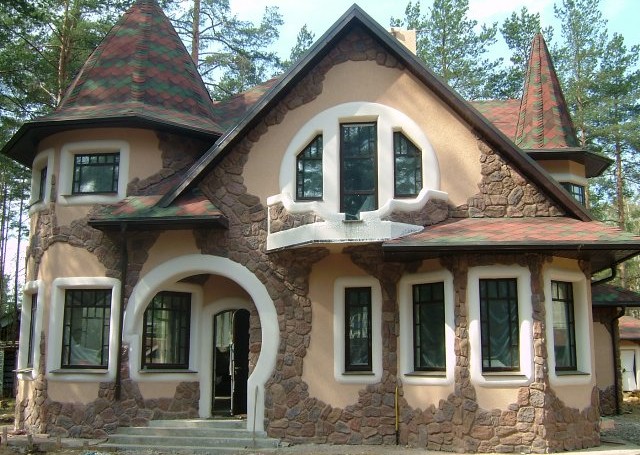
No. 5. Types of artificial stone for the facade
Industry has mastered a ton of ways to create man-made stones. The main types of artificial stone include:
- clinker stone produced from special refractory clay grades at elevated temperatures. The result is a durable, durable and solid material that is not afraid of moisture and sunlight. By its properties, it is close to some species of natural stone. Available as clinker cladding bricktiles with imitation of masonry and sandstone of various types of processing;

- concrete stone - the easiest to manufacture, and therefore the cheapest. Made from high grade concrete by pouring it into the appropriate form and rammers. In a similar way, you can make a stone of any size, shape and relief, color it in bulk and imitate at least granite, at least slate. The strength of such a stone is high and similar to cement plaster mortar, the weight, however, is also high. Allocate more architectural stone - the same concrete, but it includes mineral fillers and special modifiers;

- polymer sand stone made on the basis of polymers and fillers, which are usually used sand. Such a stone imitates a brick or has a chipped surface. The material is not very strong, but due to its ductility, waterproofness and resistance to high temperatures, it has high durability;

- synthetic resin stone with a filler in the form of stone chips in strength and beauty is closest to natural stone. It can imitate any breed and have any surface;

- ceramic facade stone produced using technology close to conventional ceramic tile, i.e. based on clay. The material imitates a stone with a smooth polished surface or with a small relief, it is resistant to moisture, but not the highest strength, and under the influence of temperature changes it can begin to peel off, so it is not used very often.

No. 6. Mounting options for facing stone
The stone can be mounted in one of the following ways:
The first option is used most often, but requires careful surface leveling and the use of a reinforcing mesh. The ventilated facade allows air to circulate freely and excess moisture to be removed, as there is a hole between the exterior wall and the finish. In this case, the stone is fastened to metal guides with the help of clamps. It is better to entrust the facade cladding with a stone to specialists - it is difficult to do all the work yourself.
Number 7. Types of stone masonry for facade decoration
A lot depends on the appearance of the stone, but no less important is how the individual elements are arranged relative to each other. Type of masonry choose depending architectural style and your own preferences:
- masonry cladding involves the use of elements of irregular shape (if it is a natural stone, then with minimal processing). They are arranged randomly and so that the gaps are minimal. Externally, the masonry smoothes naturally and very effectively, but the installation process is complicated by the fact that it is necessary to have a sufficient aesthetic taste;

- cladding cladding involves the use of rectangular elements with different lengths and widths. It is not difficult to dock them, but it is important to combine stones of different sizes beautifully, and this requires a certain qualification. The finished masonry resembles that used in medieval castles, which is why it got its name;

- cladding facing “plateau” It is created from elements of a rectangular and square shape, the sides of which are multiples of 5 cm, and from the “castle” masonry it differs only in the presence of square elements, which makes it more diverse. Arrangement requires qualifications and certain experience;

- masonry "rondo" involves the use of round and oval stones (pebbles, processed quartzite), it is used mainly for finishing individual facade elements;

- masonry "shahriar" - the simplest in execution, consists of elements of a rectangular shape, resembles brickwork. Here it is important only to lay out the first row evenly;

- masonry "Assol" It is made from a die, only the stones here are placed not on the front side, but on the end, which allows you to form a beautiful volume surface. The laying process is complicated, mainly slate and sandstone are used.

What is natural, what is artificial stone have sufficient performance for facade cladding. In terms of durability, strength and decorativeness, the modern artificial stone has come close to the natural one, which cannot but rejoice - the beautiful facade is becoming more accessible.

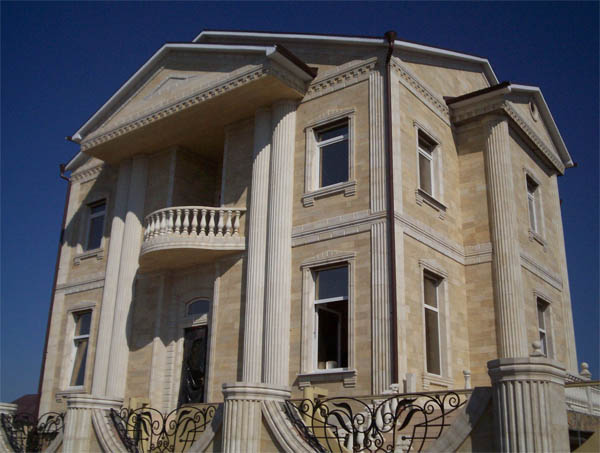


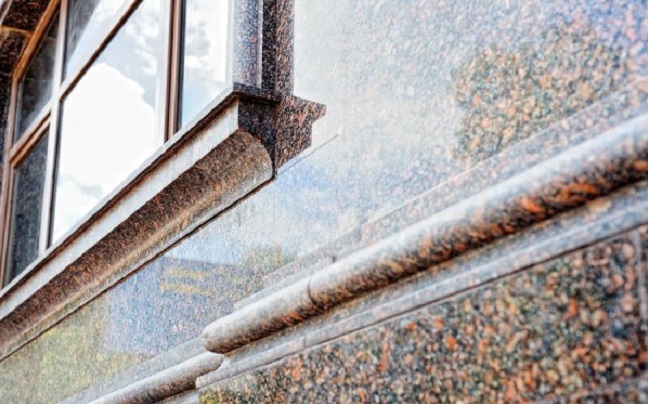
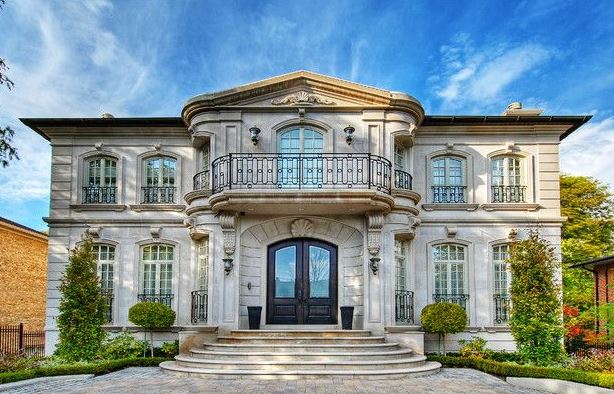
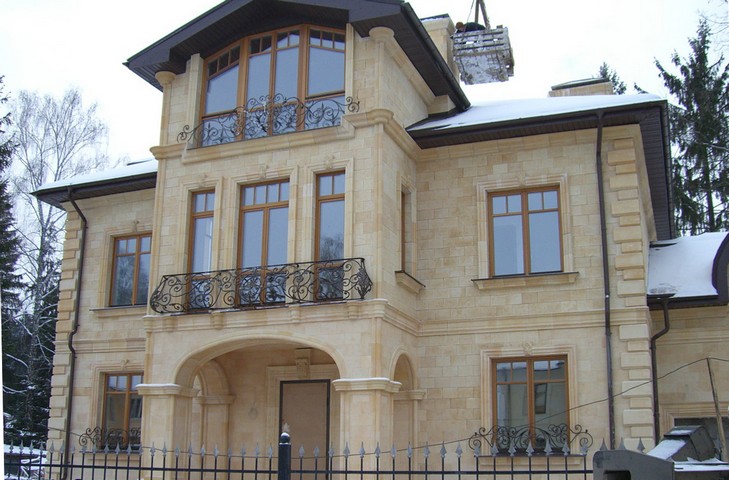
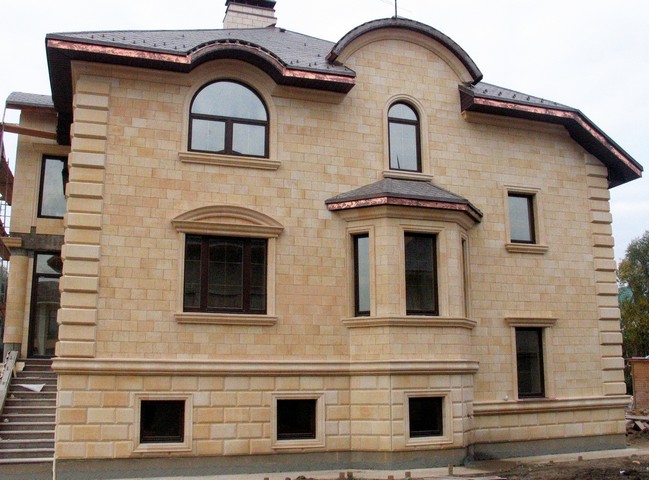
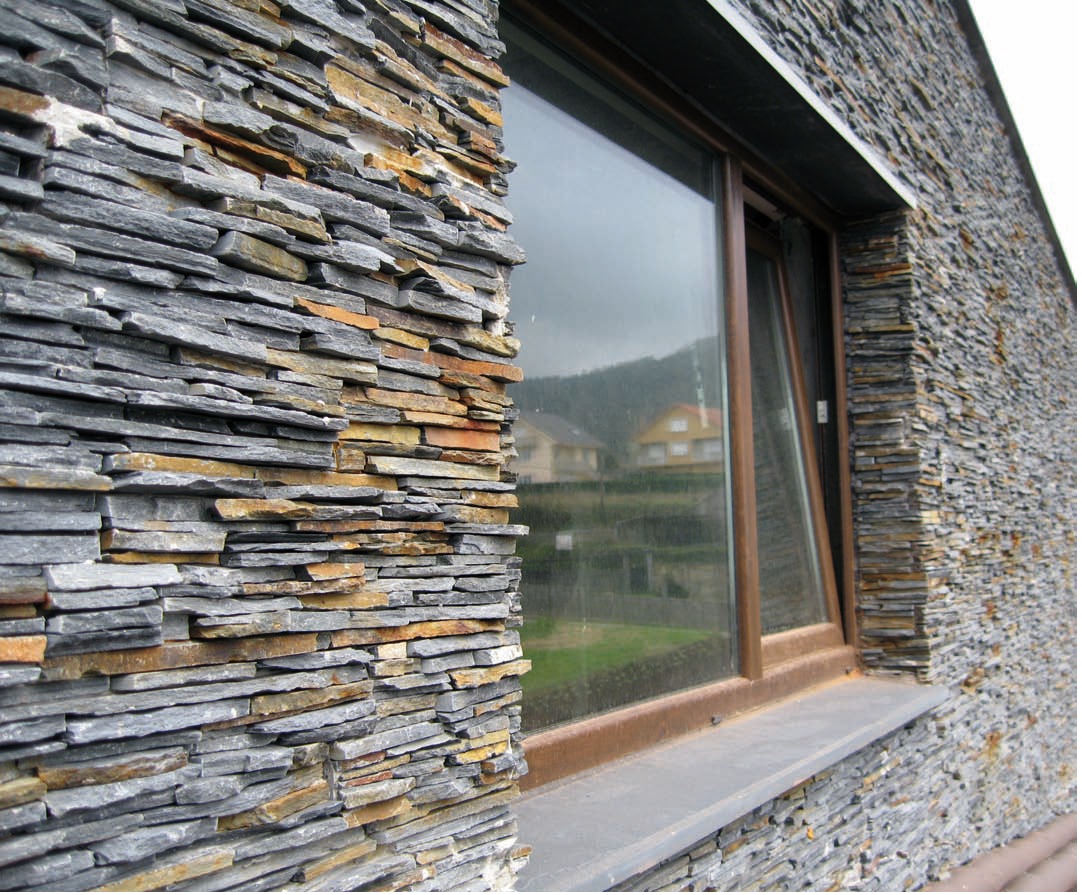
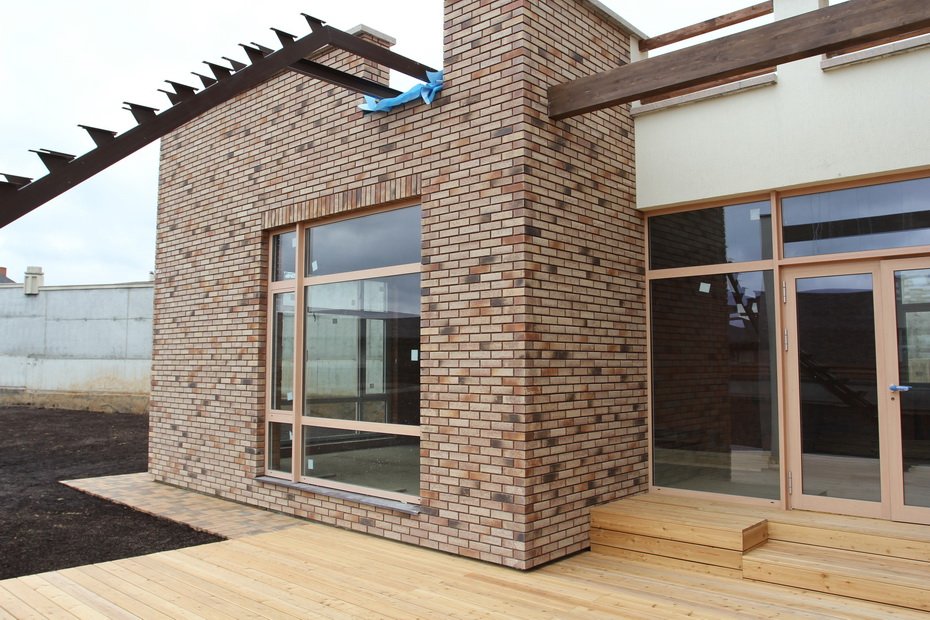
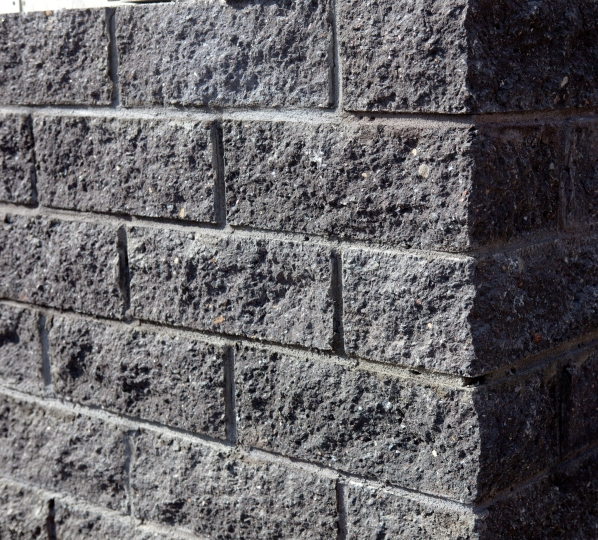
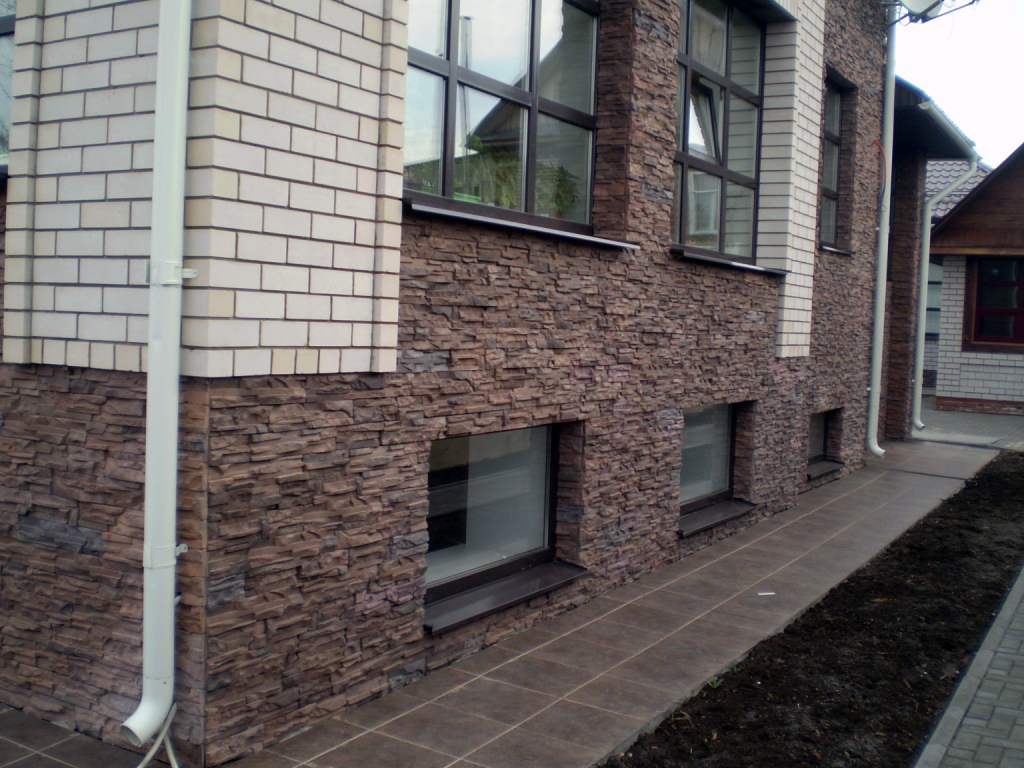

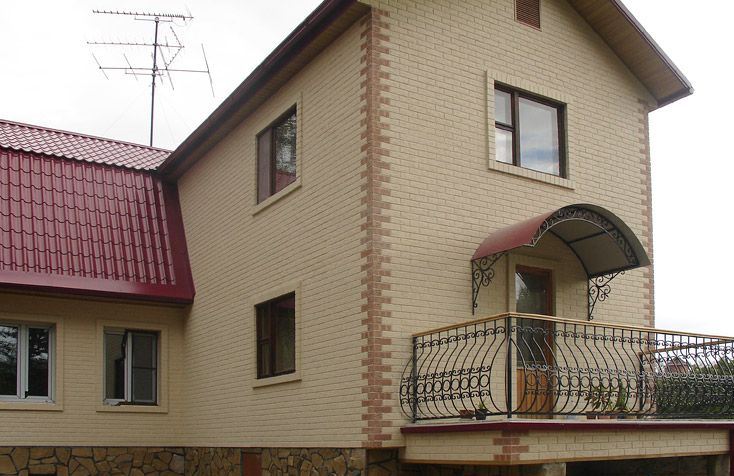

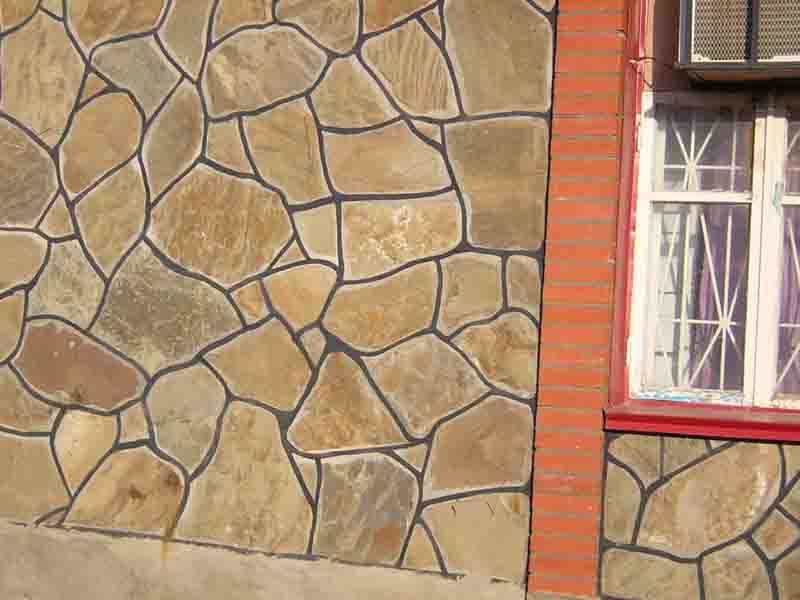
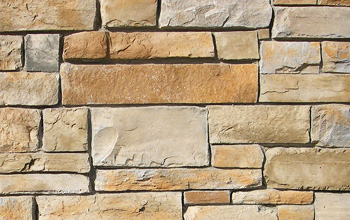
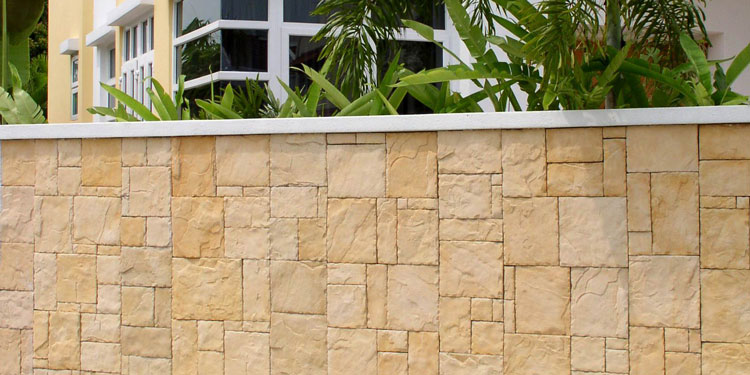

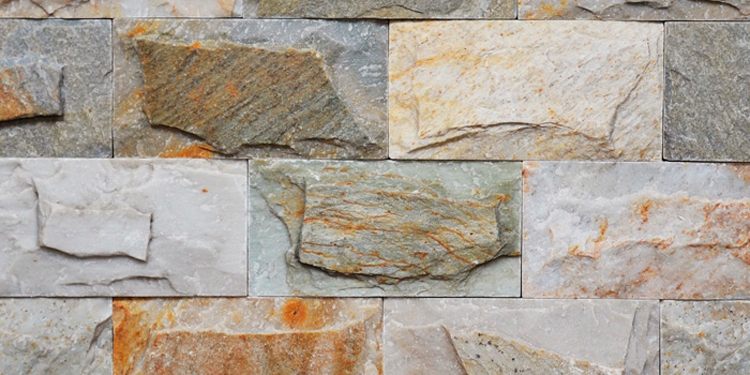

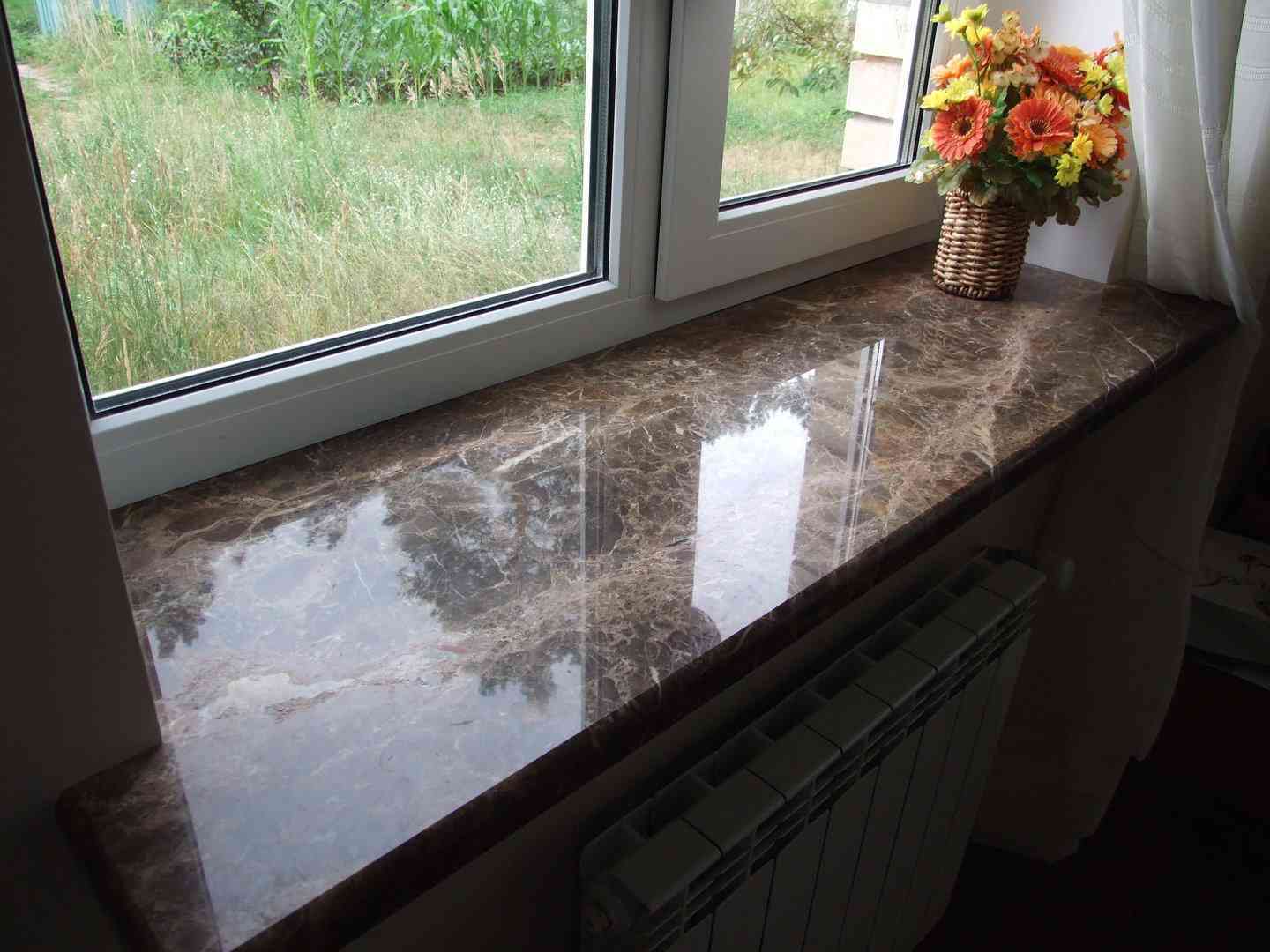
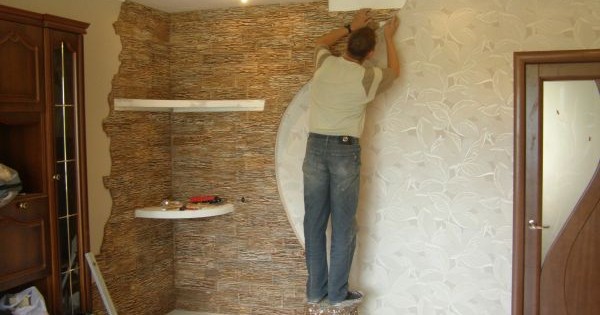
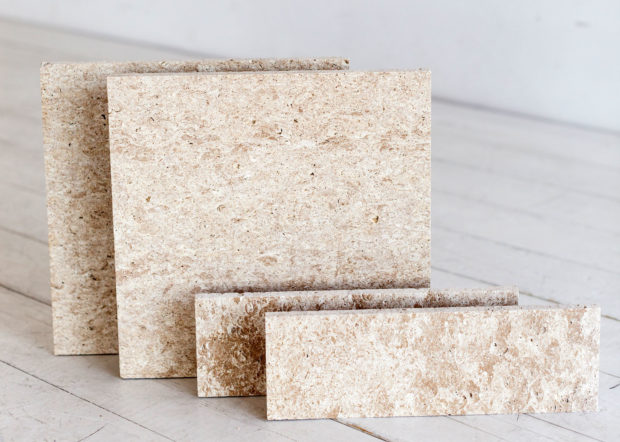
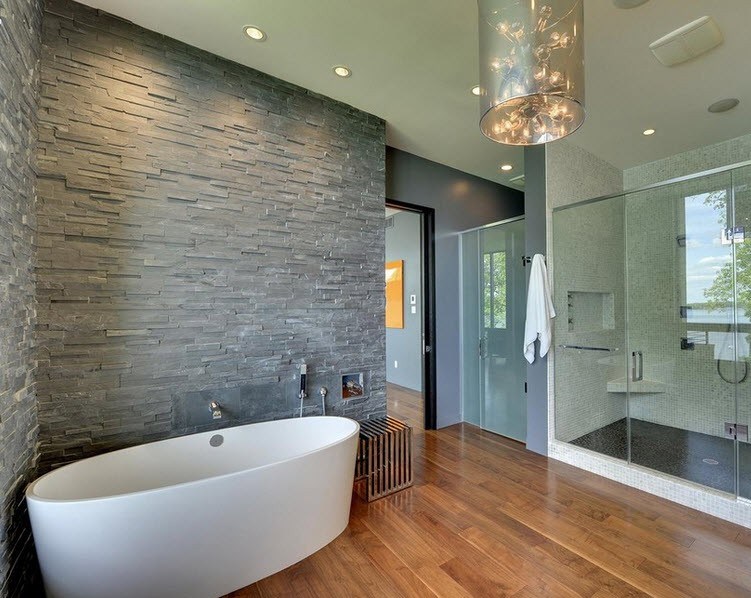
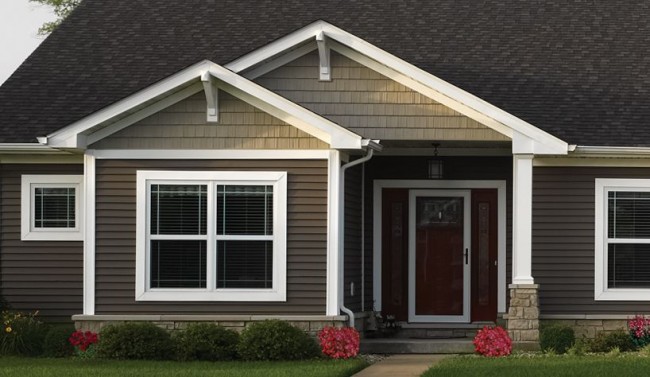
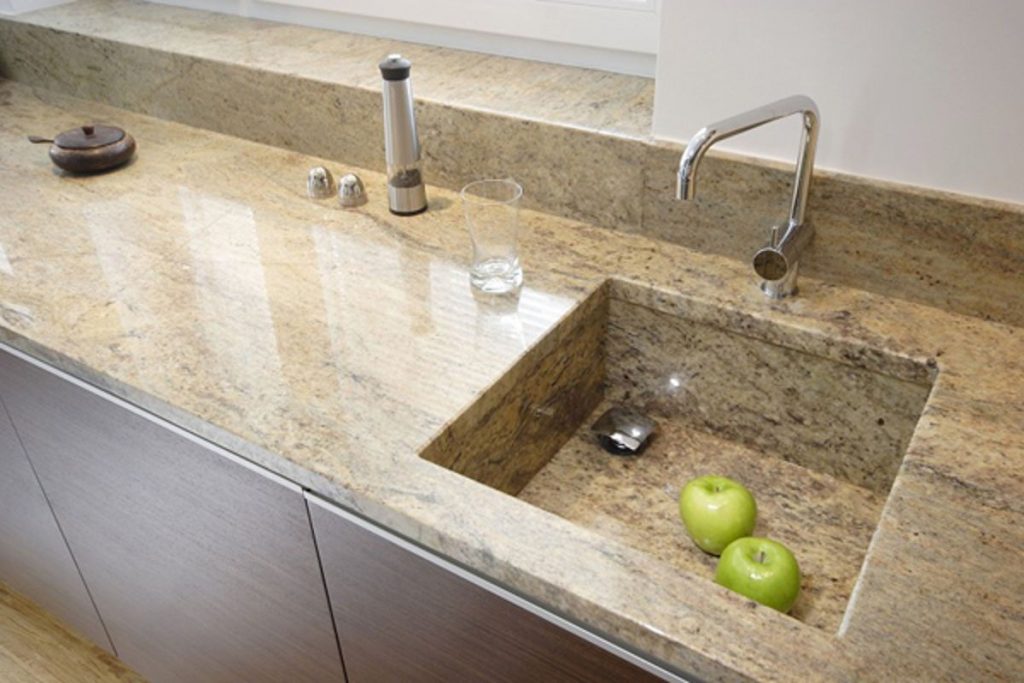
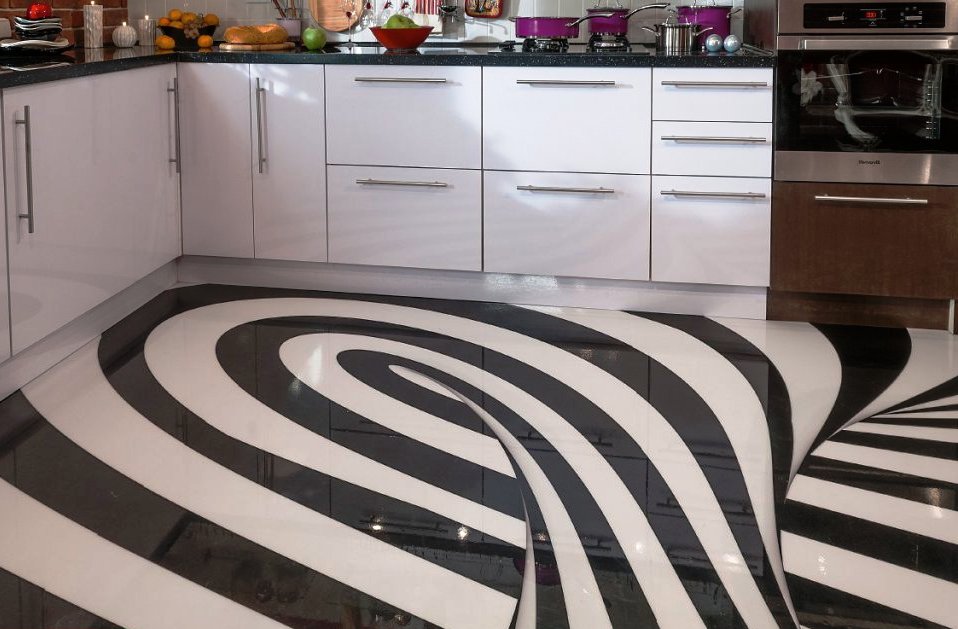
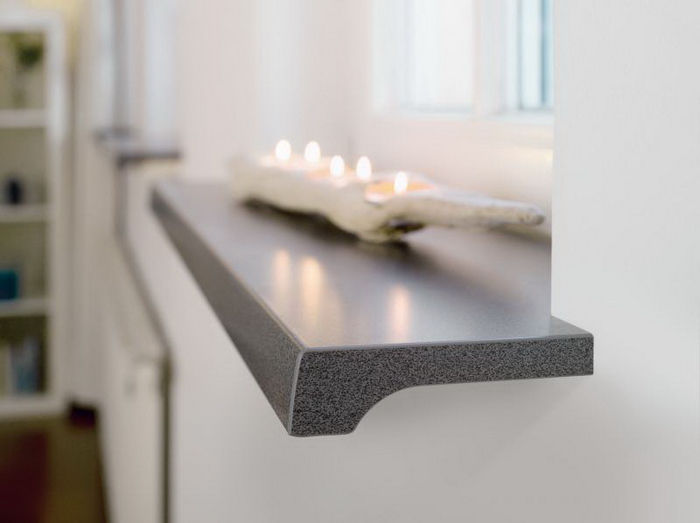
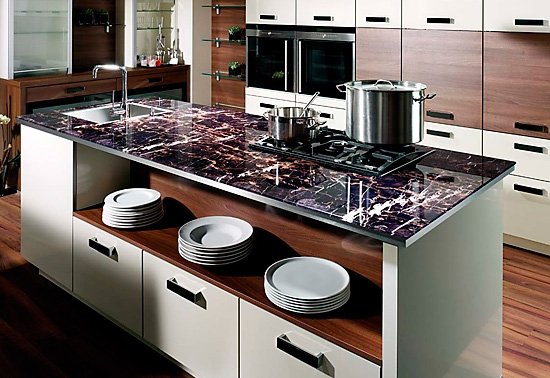
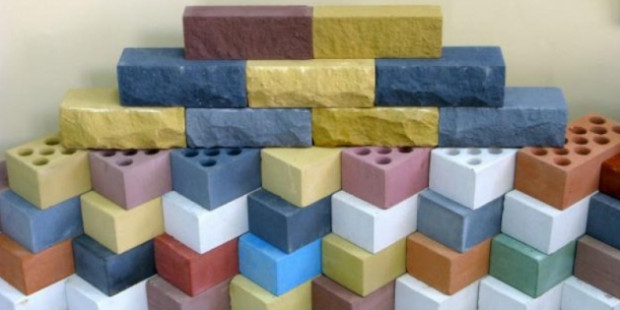
The quartz stone cladding looks very aesthetically pleasing and stylish. He made such a cladding on his house, with inserts according to the design project. We picked up with the designer an excellent version of the cladding.